Kosmeya: description, planting and care

Kosmeya is an ideal flower for gardeners who want to grow a lush, bright, tall and unpretentious flower on their site. In this material, you will get acquainted with the description of the cosmos, as well as with the peculiarities of planting and caring for this garden crop.
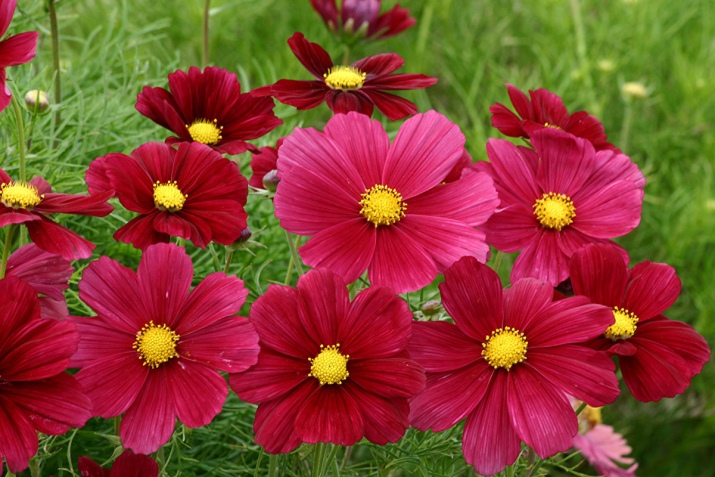





Description
Kosmeya (popular name - "Cosmos") - refers to the genus of annual and perennial herbaceous crops from the Astrovye family. In the natural environment, it is ubiquitous in South (less often North) America.
To date, researchers distinguish about 40 separate varieties of cosmos, among which only two are actively cultivated by gardeners: double-feathery and sulfur-yellow cosmos.


Kosmeya is represented by numerous green shoots with reddish veins. Depending on the variety and type of flower, individual shoots can grow up to 1.5 meters in height. The green growth of cosmos has a spreading structure, which is why the plant is often confused with a shrub.
Cosmos bloom lasts about 3 months - begins in June or July and ends with the onset of the first frost. Cosmea inflorescences are large, paniculate type, usually not exceeding 12 cm in diameter. The buds are tubular, pinkish, blue, red, brown or lilac with yellow anthers.

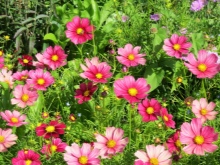

Types and varieties
As already mentioned, there are about 40 species of cosmos, but only 2 of them are actively grown in garden plots. In addition to these species, there are a huge number of varieties of cosme, which will also be presented below.
- Double-feathery. Kosmeya of this species includes annual varieties with thin olive leaves resembling dill, fragile peduncles, and inflorescences of red, white and pink. Such plants reach 150 cm in height. The most popular varieties of such a cosme are “Radiance” - corrugated petals with contrasting spots near the core, “Puriti” - white, triangular and wide petals, “Sensation” is one of the longest-flowering varieties with numerous lilac inflorescences.


- Sulfur yellow. Also a tall look - these flowers can grow up to 1.2-1.5 m in height, while they have lush branching stems. Inflorescences are predominantly yellow or orange up to 5 cm in diameter and with a jagged outline. Famous varieties: "Bilbo" - undersized kosmeya up to 0.5 m in height with semi-double peach buds, "Diablo" - large yellow-red flowers, "Crest Lemon" - a dwarf variety with yellow inflorescences on short stems (up to 0.5 m ).


- Blood red. It is characterized by large brown or burgundy inflorescences with a dark core and velvety petals.
This type of cosme is also popular for its coffee aroma.

- Chocolate. A perennial variety straight from Mexico - it has large burgundy or black buds up to 4 cm in diameter, a sweetish coffee smell and a height of up to 1.5 m.

How to plant?
The process of planting cosmea seedlings in open ground includes several stages: choosing a site, preparing a substrate and planting seedlings directly. During each stage, certain subtleties must be taken into account, which will be discussed below.
Seat selection
To plant the cosmos, you need to choose an open, sunny place on the north side of the garden. Kosmeya loves sunlight, which is reflected in the abundance of flowering culture.In addition, the place should be sufficiently dry and windless - lowlands, in which moisture accumulates after rain, or hills with gusts of strong and cold wind, are not suitable for this.
In partial shade or near other shrubs, these flowers should not be planted. - in such conditions, the cosmeya will delight you with a minimum number of buds, but the greenery of the flower will greatly grow.
The abundance of natural sunlight is especially important for perennial varieties of cosmos, and therefore flower beds with such flowers are usually built in open areas.



Soil preparation
Kosmeya does not differ in specific requirements for the quality of the soil on the site - it can grow even on loam or on depleted sandy loam, but the soil in any case should be light and breathable. Besides, on a flower bed with cosmos, the soil should allow moisture to pass through well - otherwise, a drainage layer is organized in the holes with seedlings.
As for the composition of the soil, neutral soils or soil with a low acidity factor are best suited for cosme.

Planting seedlings
Prepared kosmeya seedlings are planted in open ground in the first half of June or in mid-May (if we are talking about the southern regions). The planting process is as follows.
- Before planting, the soil in the flowerbed is dug up, while all weeds and roots of old shrubs and trees are removed. Then, wide holes up to 35 cm deep are dug in the flowerbed.
- The wells are abundantly watered with settled water, after which the gardener waits until it is absorbed into the soil.
- At the bottom of the hole, a drainage layer of broken brick, expanded clay, pebbles or river sand is placed.
- One seedling is placed in each hole along with a lump from the container where the seedlings grew. All free holes are filled with a mixture of meadow soil, peat and sand (if the soil is depleted or heavy). After that, the plant is watered again abundantly.
- As soon as the seedling takes root in a new place and reaches a height of 50 cm, it should be pinched to provoke the growth of lateral shoots - this will make the flower more lush.

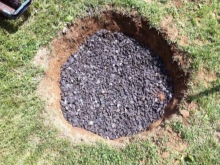

In the case of planting seedlings of cosmos in open ground, the very first buds should appear in the same summer (about 1-1.5 months after planting).
How to take care of it properly?
Kosmeya is considered a rather unpretentious flower when it comes to care - it has excellent immunity, which allows the plant to bloom even on depleted soil without regular gardener care. The whole process of caring for cosmos flowers is reduced to watering, feeding, loosening and decorative pruning.


Watering
Kosmeya belongs to garden crops that retain moisture poorly at the roots, and therefore watering this plant should be not only abundant, but also frequent. Young seedlings are watered every 2-3 days, older bushes - once a week or as the earthen crust dries up in the near-stem circle of the flower.
Watering one adult bush of cosmos should take about 4 ten-liter buckets of settled water. Water must be applied exclusively under the roots, since when watering with a watering can there is a chance of rotting flower shoots and sunburn. The watering procedure itself is best done in the early morning or evening.
In dry seasons, the kosmeya needs increased watering - in this case, the formation of a dry crust in the near-stem circle near the flower should not be allowed. Due to the lack of moisture, the number of cosmos buds sharply decreases, the flower itself withers and weakens.


Top dressing
Vitamin dressings are introduced into the soil to the space 3 times per season. The very first feeding is carried out 14-15 days after planting the seedlings in a permanent place - complex mineral fertilizers are best suited here. The second feeding is carried out during the period of bud formation. The third and last dressing should be carried out during the flowering period of the cosmos - for a richer color of the buds and prolongation of flowering.
If we talk about certain fertilizers, then “Bud” is best suited to stimulate flowering and the formation of lush buds, but the drug “Agricola” showed itself well as an optimal mineral fertilizing for the whole season. Kosmeya is also good for organic fertilizers, but they should not be applied fresh to the soil - this applies to compost or manure.

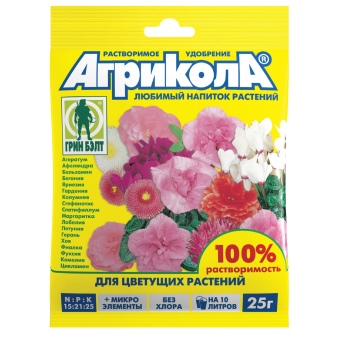
Organic fertilizers are usually applied to the soil to the space or serve as a mulch layer, but mineral fertilizers are usually mixed with water to water the plant and can be applied under the roots of the flower or sprayed over its shoots.
With fertilizers, the main thing is not to overdo it: an excess of vitamins in the soil can lead to wilting of the flower or a decrease in the number of buds.
Top dressing is usually applied only to depleted soil, where cosme bushes grow; on fertile, vitamin-rich soils, additional fertilizing is not required for these flowers.

Pruning and loosening
In order for the cosmos bushes to retain their decorative appearance for a longer period, their dry and faded buds are advised to be removed immediately - this will stimulate the growth of other buds and prolong the flowering period.
Some varieties of cosme are distinguished by excessive bushiness, and therefore young shoots of cosme are sometimes pinched even before the period of active growth - in perennial varieties, this is usually done in early spring. The decorative appearance of the flower will help maintain a regular haircut. During this procedure, it is advised to remove no more than 30 cm from young and adult shoots.
If the cosmos bush has grown a lot, gardeners are advised to organize a solid support so that the tall shoots of the flower do not break under the wind or under their own weight.

Another important step in caring for the cosmos is loosening the earth in the trunk circle near the flower. This not only lightens the soil, but also makes it more airy, which allows oxygen and moisture to reach the roots of the flower unhindered.
In addition, summer and spring loosening will rid the soil near the flower of weeds, but loosening before frost will remove the larvae of pests that have lurked there for the winter from the soil.

Wintering
If you are going to grow a perennial kosmeya in your garden, then in the fall, before the onset of the first frost, the flower must be properly prepared for wintering. Experienced gardeners cut off all the shoots and buds of the cosmos to a level of 10-15 cm above the ground, and then cover them with a layer of spruce branches, which will protect the flower from frost and heavy snow. It is better not to use burning foliage for shelter - the larvae of many garden pests prefer to winter in it. To keep the roots of the flower from freezing, a layer of mulch made of straw, peat, rotted manure, sawdust or tree bark must be organized in the trunk circle.
With the onset of the first warm spring days, the shelter from the cosmos is removed so that the flower does not snatch under the sun's rays.
If perennial kosmeya is grown in southern regions with long and harsh winters, then it is best to dig up the flower for the wintering period and transplant it together with an earthen clod into a temporary pot, where it will be stored until the onset of warmth.
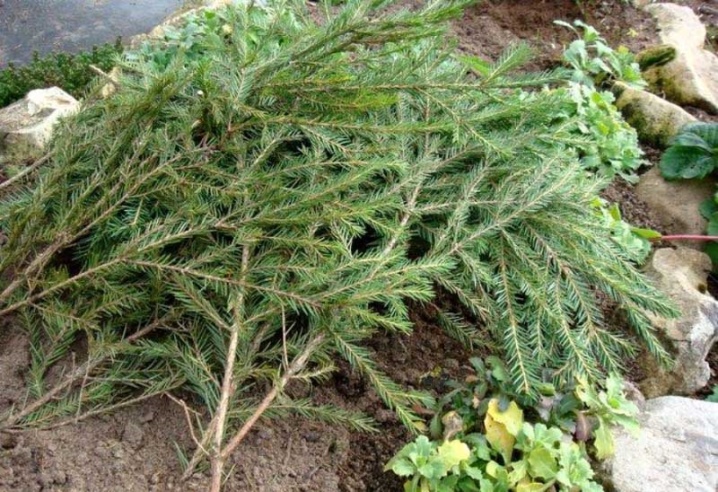
Reproduction
Experienced gardeners prefer to grow cosmea using the seed method - this is a rather painstaking and difficult process for a beginner, but with the right approach, it allows you to save up to 90% of all seeds planted for seedlings. Seed propagation is also popular due to the long shelf life of seeds - they are able to maintain planting properties for 3-5 years. When choosing a seed method, keep in mind that kosmeya belongs to cross-pollinated garden crops, and therefore hand-picked seeds of this flower may lose varietal characteristics.
In addition, growing seedlings of cosmos from seeds will postpone the flowering period of the crop by about a month - from June to July.

Seed reproduction includes 2 stages: collection of seeds and preparation of planting material, as well as directly sowing seeds in open ground or in prepared containers.
Approximately 2-4 weeks after the end of the flowering period, the fruit pods of the cosmos begin to actively darken and turn yellow - this is a sure sign that the time has come to collect planting material. So that the seeds do not crumble prematurely, after flowering, the buds are tied with gauze bags - this allows you to preserve most of the mature seeds, which in their natural environment simply fall into the soil of the flower's trunk circle.
According to the condition of the seeds, you need to monitor the untied fruit pods - as soon as the planting material darkens, the collected seeds are placed in a warm room with good ventilation and dried at home until they are planted in special containers or in open ground.


If you decide to grow cosme seedlings from seeds at home, then the second half of March is considered the best time for planting planting material. For planting, it is best to select large containers with drainage holes.
At the bottom of the tanks, a drainage layer of expanded clay, pebbles or foam is necessarily organized. Any soil can be selected (even for indoor plants), but it must be breathable. In a room with planting material, a stable temperature level of 18-20 degrees must be maintained. Flower seeds are slightly pressed into the ground and watered with water at room temperature.
In such conditions, the first shoots of cosmos will appear within 1.5 weeks after planting. As soon as the seedlings have 3 full leaves, a pick can be carried out - transplanting seedlings into separate cups, in which the plant will grow before planting in open ground.
In order for the seedlings to feel comfortable in a permanent place in the garden, about a month before planting, the seedlings are taken out on the loggia or on the balcony. This hardening is carried out every day, and the amount of time on the balcony should gradually increase.

Some gardeners prefer to sow cosme seeds directly into open ground. This is a rather radical method that saves no more than 60% of all planting material.
For so that cosme seeds can grow in a flower bed, they should be planted in early Maywhen the cold nights have already passed and a stable daytime temperature of 12-15 degrees is established. For seeds to sprout faster, they should be planted in open, sunny areas where the soil is regularly warmed up.
Seeds are planted in previously prepared beds or grooves, 2 pieces per groove. In the future, weak seedlings can be thinned out. The seeds are lightly pressed into the ground or simply slammed, then watered with a watering can.
In favorable conditions, the first shoots of cosmos should appear within 2 weeks after planting. After the appearance of 4-5 leaves, the seedlings can be transplanted to a permanent place.

Diseases and pests
Among other ornamental horticultural crops, kosmeya is considered the most stable and healthy - it is not afraid of either pests or fungal diseases. The only pest that can really do harm is ordinary garden snails and slugs. NSThese pests appear at high humidity and are capable of destroying all green growth of a flower in a very short time.
Snails and slugs can be removed manually or using beer traps - for this, containers filled with regular beer are installed around the circumference of the flower bed. The beer drink acts as a bait, after which the snails can be easily harvested by hand.
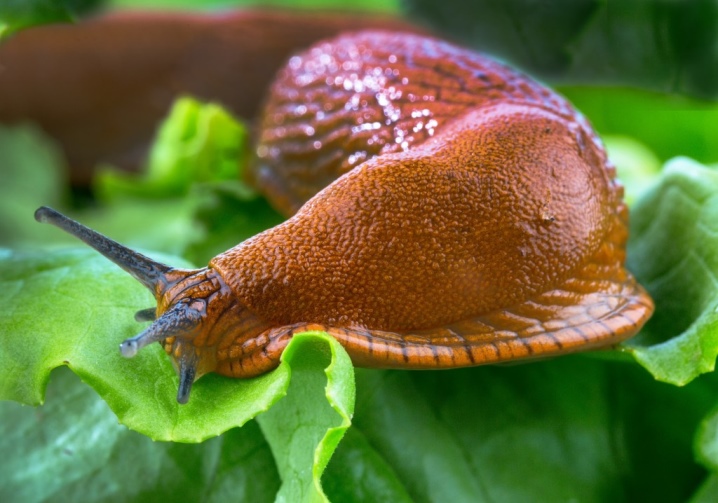
In rare cases, gardeners face some problems when growing garden cosmos. The most common is no flowering or few buds. There may be several reasons why cosmeya does not bloom.
- Late or late boarding. Some varieties of cosmeas differ in individual requirements for the time of planting, and therefore may simply not have time to bloom before frost when planting at the wrong time.
- Excess fertilizer in the soil. It should be understood that most of the nutrients from the soil where the kosmeya grows goes precisely to the formation of shoots and greenery, while the number of buds decreases, and their color becomes less saturated. In feeding, not only timeliness is important, but also doses. Usually, no more than 15-20 grams of mineral fertilizer, diluted in 10 liters of water, is applied to 1 square meter of a flower bed with cosmos.
- Varietal culture. Some varieties of kosmea are distinguished by late flowering, and some by early flowering. This point needs to be clarified at the time of purchase.
- Improper care. If the problem of lack of flowering does not apply to the points above, then incorrect or irregular care of the plant is corny. Everything can be included here - from lack of natural light to irregular watering and lack of ventilation.

Cosmeya owes its good immunity to the growing conditions in its homeland - in South and North America. There, these flowers are considered meadow plants that can grow successfully even in the most impoverished areas. Such conditions hardened the cosmea and made it possible to grow this flower in Russia without any problems.


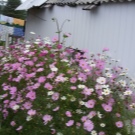



Use in landscape design
Kosmeya is a versatile plant for growing in a garden - it has not only frequent bright flowers, but also lush rich greenery that will decorate any flower bed.
Cosmea has quite a few uses in landscape design - gardeners plant these flowers next to garden paths, in the form of a hedge near curbs, or simply grow in groups of different varieties in a flower bed. Kosmeya can be considered a fairly high horticultural culture, and therefore sometimes with its help they can shelter vegetable crops or nondescript garden structures and extensions.




When planted in a group of plants, kosmeya is combined with almost all popular garden crops. These flowers look very beautiful and harmonious together with carnations, asters, geraniums, mallows, chamomiles, marigolds and lilies. If you want to create a flower and bright flower bed of different shades, you need to make sure that the periods of flowering flowers in the flower bed coincide.



The advantage of perennial cosmos is that for the winter period it can be moved into a pot and painlessly stored at home.
It must be said that today kosmeya is grown not only thanks to its bright flowers - this garden culture emits a tart, pleasant, albeit quite light aroma that will perfectly fit into the overall floral background of the entire garden.



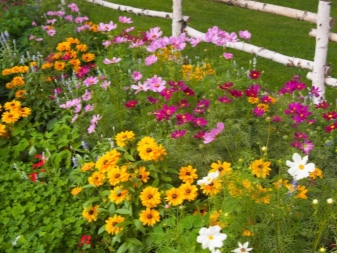
For more on space, see the next video.







































































































The comment was sent successfully.